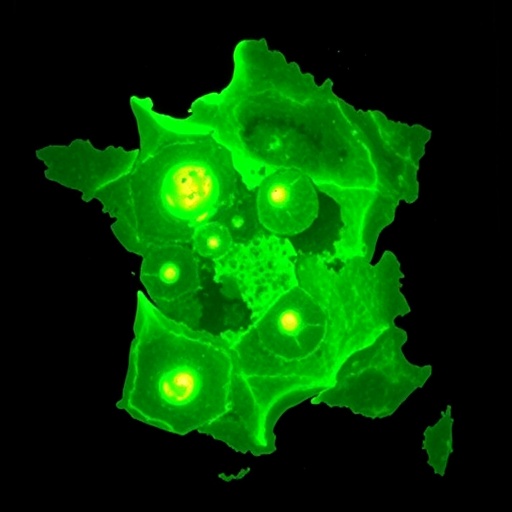![]()
Credit: NASA Worldview
Pablo is a tropical cyclone that formed late on Oct. 25 and strengthened into a hurricane for a short time before weakening again into a tropical storm. NASA’s Aqua and Terra satellites provided imagery that covered that fast transition. Pablo’s formation was also interesting because it formed within a larger system.
On Oct. 25, the National Hurricane Center or NHC noted that a tropical cyclone has formed within a larger extratropical cyclone in the northeastern Atlantic. This is not unique and has occurred several times in the past, primarily during the latter part of the hurricane season. Pablo formed as a very small-scale tropical cyclone, but had a well-defined but small circulation with 40 knots winds embedded within the larger low-pressure area.
By 5 p.m. EDT on Oct. 25, Tropical Storm Pablo formed about 325 miles west-southwest of the Azores islands.
On Oct. 27, NASA’s Aqua satellite found Pablo had strengthened into a hurricane. NASA’s Aqua satellite passed over Hurricane Pablo on Sunday, Oct. 27 at 9:55 a.m. EDT (1355 UTC) and captured a visible image of the compact storm that showed the storm had a clear eye. Pablo was a small tropical cyclone with hurricane-force winds extending outward up to 10 miles (20 km) from the center and tropical-storm-force winds extending outward up to 80 miles (130 km).
At 11 a.m. EDT (1500 UTC) on Oct. 27, the center of Hurricane Pablo was located near latitude 42.8 degrees north and longitude 18.3 degrees west. Maximum sustained winds had increased to near 75 mph (120 kph) with higher gusts. The estimated minimum central pressure is 983 millibars.
On Oct. 28 at 5 a.m. EDT (0900 UTC), the center of Tropical Storm Pablo was located near latitude 46.6 degrees north and longitude 17.5 degrees west. That is about 725 miles (1,165 km) northeast of Lajes Air Base in the Azores. Pablo was moving toward the north near 5 mph (7 kph). Maximum sustained winds were near 50 mph (85 kph) with higher gusts.
When NASA’s Terra satellite passed over the eastern Atlantic Ocean on Oct. 28, the Moderate Resolution Imaging Spectroradiometer found Tropical Storm Pablo to the west of Ireland. Pablo’s center of circulation was visible as a circular area of clouds within the larger low-pressure area. Satellite imagery revealed that thunderstorm development within the storm decreased significantly in both coverage and vertical depth during the morning of Oct. 28, and the system barely met the criterion to be classified as a tropical cyclone. The remaining thunderstorm development and convection (rising air that forms the thunderstorms that make up a tropical cyclone) that does remain is limited to the southeastern quadrant.
Slow weakening is expected during the next 24 hours, and the NHC forecast notes that Pablo should transition to a post-tropical cyclone later on Oct. 28 and dissipate on Tuesday, Oct. 29.
Hurricanes are the most powerful weather event on Earth. NASA’s expertise in space and scientific exploration contributes to essential services provided to the American people by other federal agencies, such as hurricane weather forecasting.
For updated forecasts. Visit: http://www.
###
Media Contact
Rob Gutro
[email protected]
Original Source
https:/




